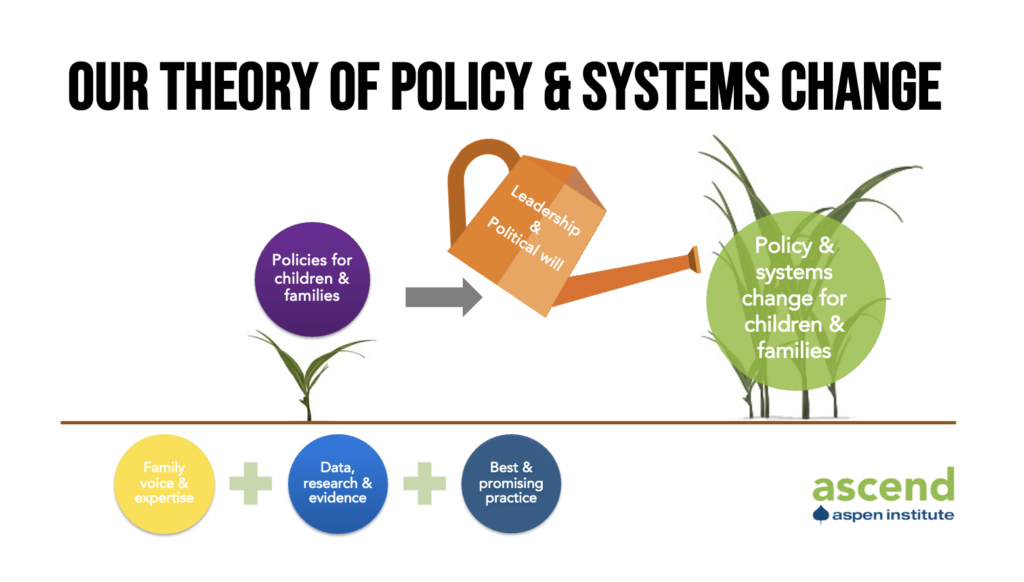Policymakers Can Measurably Improve Outcomes for Families
Policymakers can take steps now to move two-generation (2Gen) strategies forward and measurably improve outcomes for both children and the adults in their lives. Unless they rise to this challenge, the next generation will be at further risk — for developmental delays, academic struggles, and, ultimately, the same challenges facing their parents for economic stability. Our long-term economic prosperity will also be at risk as children and parents struggle to achieve educational and economic success. 2Gen policies offer policymakers the chance to break the intergenerational cycle of poverty and replace it with opportunity.
The reality is that many policies created in the War on Poverty era have yet to catch up with the diverse 21st century family or scientific advances that deepen our understanding of the ways that both children and adults learn. Recent findings in brain science underscore this fact: the development of children and parents is inextricably linked. Parents gain motivation to succeed from their children and vice versa; their efforts are mutually reinforcing.
Early childhood education, postsecondary and employment pathways, economic assets, health and well-being, and social capital are the core components that create an intergenerational cycle of opportunity. Human services policies can cut across these components of the 2Gen approach, particularly the two critical components of quality early education for children and workforce training and post-secondary education for parents.

Central to Ascend’s theory of systems and policy change is lived experiences and recommendations of young parents with young children.
At their heart, 2Gen approaches are about a commitment to better outcomes for children and and the adults in their lives at the same time, outcomes that must be measured together. If this commitment is met, using a 2Gen lens to view policy can offer practical solutions for programs, communities and states that lead to greater support and higher impacts for children and families.
The Opportunity for Children and Families — A Focus on States and Communities
An increasing number of states are embracing a 2Gen approach as a strategy for boosting the effectiveness of programs and integrating them into efforts to improve child and family education, economic, and health outcomes. With the administration set to review and revise federal policies, an active and critical mass of states is poised to come together to amplify their commitment to children and families. States and communities are ready to reimagine existing services and accelerate collaboration and innovation to ensure all families have an opportunity to gain lasting economic security. Further, with potentially tightening state budgets, innovative approaches that use existing programs and resources effectively to produce better child and family outcomes will be in demand.
Over the past five years, Ascend has partnered with, learned from, and provided extensive technical assistance to state efforts in Colorado, Tennessee, Connecticut, Utah, Washington, Maryland, and Hawaii. To date, at least 34 states and Guam are implementing or have indicated a strong interest in integrating 2Gen strategies into state and local policies and programs. Additionally, the National Governors Association and the American Public Human Services Association, among others, are actively deepening their 2Gen approach to achieve better outcomes for children and families.
Leveraging Roles and Responsibilities — Federal, State, and Community
While the federal government provides critical funding and guidance for programs and services for families with low incomes, states and communities have considerable flexibility in how investment priorities are set and how programs hit the ground. Two key commitments are essential: 1) maintain adequate funding commitments to scale and link effective and innovative programs that help families reach their full potential; and 2) keep children and families at the center of policy and program design and implementation.
